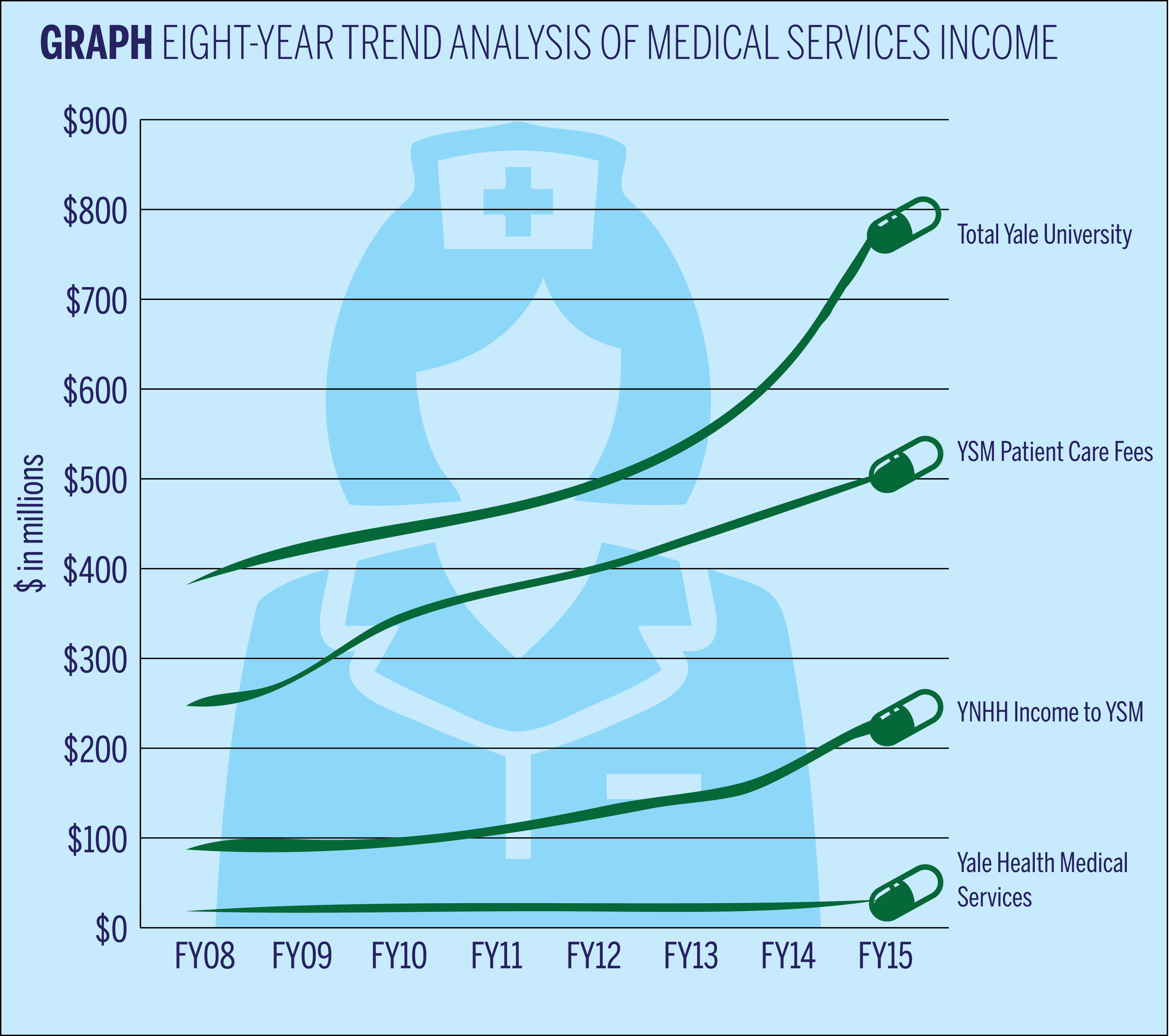
Revenue from the Yale School of Medicine is rising, even as federal funding for health care and research remains under pressure at Yale and universities across the country.
According to Yale’s annual financial report released last week, revenue from Yale’s medical services in 2015 increased by 12.4 percent from 2014. While federal grants are integral for generating revenue research at universities like Yale, federal funding has stagnated over the past 10 years. The School of Medicine received over three-fourths of the University’s grant and contract income — $525.28 million — but the total income from grants fell 0.02 percent from 2014. Research money given to universities like Yale by the federal government is largely determined by the actions of the U.S. Congress, who last week settled on a budget agreement with President Barack Obama that may increase funding for the National Institutes of Health. But if the NIH does not receive more funding through the budget agreement, School of Medicine Dean Robert Alpern said Yale needs to shift toward new sources of funding for its research.
“We need to be prepared to have revenue from other sources,” Alpern said. “Universities are under pressure because they’re having to support an increasing percentage of their budget to do research from internal sources.”
Alpern went on to say that the national budget is the largest threat to the University obtaining enough research funding in the future. It is unclear how much “discretionary funding” — congressional funding not mandated by law through which science research and development is largely funded — will be allocated to the NIH because of congressional disagreement between Republicans and Democrats, he added. According to Alpern, the NIH has not kept up with national inflation for about 10 years, causing a shortage of research funding at both the School of Medicine and at Yale College.
“Funding for health care and research in the United States remains under pressure, and Yale will need to adapt,” wrote Yale’s Chief Financial Officer and Vice President for Finance Stephen Murphy ’87 in this year’s annual report. Income from medical services is the second largest source of the University’s income after the endowment.
Yale relies heavily on federal grants, applied for by Yale professors and physicians, to fund research. The sum of federal grants given to Yale last year was $507.1 million — or 75.3 percent of all Yale’s grant and contract income in 2015.
But despite national stagnation in federal funding, Yale’s income from medical services remains strong. The 2015 financial report found that the income from medical services grew by over $87 million from last year. This growth in medical school income contributed $786.5 million to Yale’s overall operating budget, increasing it by 5.8 percent. Medical school administrators interviewed attributed this growth to more faculty hiring and an increased demand for medical services from the New Haven community.
“Medical services income and faculty salaries were significantly higher than the prior year, as the School of Medicine’s clinical practice continued to grow at a rapid pace,” Murphy said.
The income generated by the medical school was significantly higher in 2015 than in 2014, Murphy said. This revenue increased in part because of a growth in the clinical practices of Yale physicians, Murphy added. He continued on to say that the number of faculty and staff at the medical school has increased in recent years, with more faculty entering research positions and more staff going to clinics and labs.
Approximately 150 new physicians joined the Yale Medical Group in fiscal year 2014 and 72 new faculty members were hired in fiscal year 2015, resulting in higher clinical volumes.
“Most of the academic medical centers are doing quite well. Our trend is not different from other medical centers,” Alpern added. “As we say, it’s the best year we’ve ever had, but we’re really worried about next year.”
Alpern said that the School of Medicine’s performance with regard to medical services was somewhat in parallel with the national trend. He said that academic medical centers, such as Yale, tend to provide a higher quality product at a higher price and as a result were favored by patients with the resources to choose. The largest source of medical service income by far at Yale is the School of Medicine’s Yale Medical Group, one of the largest academic and medical practices in the country and the largest in Connecticut.
Because YMG’s recruitment of physicians was directly proportional to patient demand and not the result of policy decisions from the medical school dean’s office, the growth of physicians and the resulting income would eventually slow, Alpern said.
“The question is whether we will be able to keep growing,” Alpern said. “At some point … we will be seeing all the patients. I don’t think we’re there, but we may be soon … Connecticut is not a state where the population is growing.”
The School of Medicine, which is the largest professional school at Yale, received 5 percent of the University’s capital spending last year.







